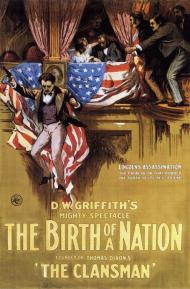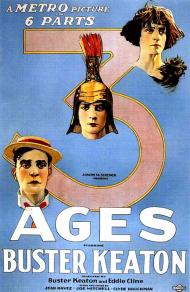Movie Review
Intolerance: Love's Struggle Throughout the Ages
A Sun Play of the Ages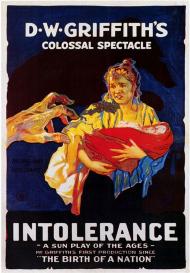
US Release Date: 09-05-1916
Directed by: D.W. Griffith
Starring▸▾
- Mae Marsh, as
- The Dear One (Modern Story)
- Robert Harron, as
- The Boy (Modern Story)
- F.A. Turner, as
- The Girl's Father (Modern Story)
- Sam De Grasse, as
- Arthur Jenkins (Modern Story)
- Vera Lewis, as
- Mary T. Jenkins (Modern Story)
- Miriam Cooper, as
- The Friendless One (Modern Story)
- Walter Long, as
- The Musketeer of the Slums (Modern Story) / Babylonian Warrior (Babylonian Story)
- Howard Gaye, as
- Christ (Judean Story) / Cardinal Lorraine (French Story)
- Lillian Langdon, as
- Mary, the Mother (Judean Story)
- Olga Grey, as
- Mary Magdalene (Judean Story)
- Margery Wilson, as
- Brown Eyes (French Story)
- Eugene Pallette, as
- Prosper Latour (French Story)
- Constance Talmadge, as
- Marguerite de Valois (French Story) / The Mountain Girl (Babylonian Story)
- W.E. Lawrence, as
- Henry of Navarre (French Story)
- Joseph Henabery, as
- Adm. Coligny (French Story) / Defendant (Babylonian Story)
- Chandler House, as
- Page (French Story)
- Elmer Clifton, as
- The Rhapsode (Babylonian Story)
- Alfred Paget, as
- Prince Belshazzar (Babylonian Story)
- Seena Owen, as
- Princess Beloved (Attarea) (Babylonian Story)
- Carl Stockdale, as
- King Nabonidus (Babylonian Story)
- Tully Marshall, as
- The High Priest of Bel (Babylonian Story) / Friend of the Musketeer (Modern Story)
- Lillian Gish as
- The Woman Who Rocks the Cradle / The Eternal Mother
![3.75 star[s] out of 4](http://www.threemoviebuffs.com/static/images/global/featured_gold_stars.png)
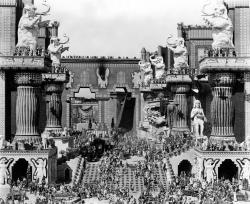
The most spectacular set ever built for a movie!
Intolerance is David Wark Griffith’s true masterpiece. It was released the year after the fatally flawed and infamous Birth of a Nation. While that was the first true Hollywood epic, Intolerance surpassed it on every level. In fact I don’t think any movie has ever or will ever seriously rival it for its ambitious scope and scale. This would be an amazing achievement for any era, but it’s positively staggering when you consider that Intolerance was made in 1916, when the movies as an art form were still in their cradle.
Originally Griffith planned a modern day morality tale about man’s inhumanity (or intolerance) to man. Eventually he decided to include 3 other periods in history, all connected by the titular theme. He then made the groundbreaking decision to inter-splice the stories together. An idea that was incredibly radical and far ahead of its time.
The modern day story, which of course now is also a period piece, concerns a young girl and boy who fall in love, get married and have a baby. All the while the events of their lives are being tragically affected by self righteous social reformers, who are intolerant of the lower class lifestyle that permits drinking and dancing.
The second most important story is set in ancient Babylon in the 6th Century BC. It concerns the fall of that once great civilization due to the jealousy of one holy man of another’s god. He betrays the king and plots with his brutal adversary. The sets for this section of the movie are breathtaking.
The most famous scene from the movie is the king’s awe inspiring hall in Babylon, where feasts and debauchery take place. The giant statues of elephants above sprawling steps are now iconic; they were reproduced for the Kodak Theater where the Academy Awards are now held. Of course today this would all be done with the magic of computers but with Griffith everything you see was painstakingly designed and crafted.
The first act ends with a battle in this Babylonian city. It is superlative. There is plenty of action and even gore, including several men getting beheaded by swords. There is also brief nudity in the Love Temple, where half naked women lounge around seductively, their breasts covered only with a transparent filmy material that leaves nothing to the imagination. Clearly DeMille was inspired by this section of the movie.
The other 2 stories play a smaller role and get much less screen time in this 3 hour and 17 minute epic. One tells of Christ and ends with his crucifixion. The other is set in Paris during the 16th Century dealing with the St. Bartholomew’s Day Massacre where Catholics slaughtered many Protestant Huguenots. Both are clear examples of religious intolerance.
Griffith used many once and future stars in bit barts. These include Douglas Fairbanks, Wallace Reid, Bessie Love, Elmo Lincoln, Erich von Stroheim, Donald Crisp, Eugene Pallette, Owen Moore and Monte Blue. Griffith, clearly an influence on many future directors, used several of them as actors here including King Vidor, Frank Borzage, W.S. Van Dyke and Tod Browning.
Mae Marsh gets top billing as the young woman in the modern story. She does a decent enough job but the movie is stolen from her by Constance Talmadge. She plays duel roles in fact. She is Marguerite de Valois in the French story but more importantly she plays the Mountain Girl in ancient Babylon. She is a spunky warrior girl with attitude and is the most memorable character of the dozens in the movie.
During the final 30 minutes or so Griffith speeds up the transitions between stories as each one builds to its climax. His muse Lillian Gish plays the Eternal Mother, shown as a woman rocking a baby in a cradle. This image is used as a device to signal a switch to another time period. There is so much going on character and story wise and so many details to notice that this movie just sort of washes over you. It would take several viewings to get your head completely around it.
In terms of absolute Hollywood spectacle Intolerance stands alone.
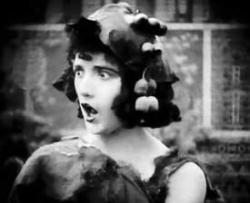
Constance Talmadge in Intolerance.
"Move those 10,000 horses a trifle to the right, and that mob out there, three feet forward," is something D.W. Griffith supposedly said while directing this film. It may be apocryphal, but this might be the only movie ever made where it could be true. This is movie making on an epic scale. At one point there were 4,000 extras on $2 a day marching down a dirt road that would soon be known as Sunset Boulevard. Beyond any doubt this is one of the most ambitious films every made. The sheer scale of the sets alone are positively mind boggling.
Patrick's right when says that Constance Talmadge steals the movie. Given the spectacle of her portion of the story, it's some kind of testament to her charisma that she's the thing you can't take your eyes off. Her walk alone will make you smile, as she struts around and looks longingly at Prince Belshazzar. She's full of moxie and her light shines brightest in this epic. A few years later, Griffith edited the Babylonian and modern story into their own movies and even reshot the ending of the Babylonian film to give Talmadge's Mountain Girl character a happier ending than she receives in this version.
Dividing the story up into four portions and then cross cutting between all four of them, is an interesting technique. Anyone who thought the Wachowski's Cloud Atlas was original for doing the same thing in 2012, should know that Griffith beat them to it by nearly 100 years. The way Griffith cuts between the stories begins a little jarringly, but smooths out as the film progresses and the ending where the climax of each film is reached nearly simultaneously, is a work of art.
However, he doesn't quite tie his four stories together as neatly as he might have. The St. Bartholomew massacre and the Christ story are both given short shrift. This is really just a two story film and could have consisted of just the Babylonian and Modern story. In particular, the Parisian story, while it demonstrates religious intolerance, never gives us a chance to become emotionally invested in any of the character's stories.
The modern story is pure melodrama. Was Griffith the first person to use the race to prevent an execution by a pardon from the governor as the climax to a film? It's such a cliche now that it definitely lessens the drama. I'm also not particularly enamored by Mae Marsh as an actress, which marred my enjoyment of this portion of the film.
As usual with Griffith, the film is technically superb. The Babylonian hall that Patrick mentioned is awe inspiring and the crane shot used to capture it was groundbreaking. The battle scenes though, are equally impressive, with their titanic walls and rumbling siege engines. If the pioneering director has any flaw in his technique it's that he over does the use of irises on the lens in too many scenes. He uses it to emphasize certain actions and characters in a shot, but it's distracting and a cheat. If the scene is set up properly, an audience's eyes should go naturally to where the director wants it. They shouldn't have to be forced there.
Griffith was riding high after the success of Birth of Nation, which was how he was able to get this movie financed for the then high budget of $2 million. Its failure would bring him crashing down to earth and nearly bankrupt him. He would go on to direct other films, some hits and some not, but none that would be as epic as this one, but that's understandable because no one else has ever made one so epic either. And thanks to a beautifully preserved print, you can make out every detail with perfect clarity.
![3 star[s] out of 4](http://www.threemoviebuffs.com/static/images/global/featured_gold_stars.png)
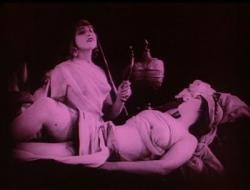
Sex has always sold.
I cannot, in good faith, give Intolerance: Love's Struggle Throughout the Ages 4 stars. As both of my brothers went on about, the parts set in ancient Babylon are the films best. However, that is just one of four story lines. Had this film just been about that section, I would easily give it the four stars that part deserves. As a whole though, this three hour plus redundant morality film is often too slow and overwrought. This is an historically important film but not a perfect one.
Although all segments feature references to sex,the parts in Babylon contain brief nudity and some scantily clad girls, sometimes in sheer clothing. Intolerance: Love's Struggle Throughout the Ages was not however, the first film to feature nudity. The first known actual nude scene filmed for public viewing is believed to have been done by none other than George Melies, famous for A Trip to The Moon (1902). The first movie ever made for projection was made by the Lumiere Brothers, titled Workers Leaving the Lumiere Factory. It was first shown to a paying public on December 28, 1895 in Paris. A mere two years later, Melies made Apres Le Bal (After the Ball, Bath), which featured what is believed to be the first known nude scene.
More notable than the titillation is of course the Babylonian sets that both my brothers mentioned. Griffith did a great amount of research into the set and costume construction. He kept a scrapbook of drawings and ideas. Experts on the subject of Babylonian history acknowledge that Griffith did his homework but also note that he exaggerated the size and scope of the city walls.
As Scott wrote, the budget for this film was over whelming and Griffith did not have the money to have the set taken down afterwards. It sat unattended for several years. One report was that it was finally demolished after the city found it to be a safety hazard in 1919. It was attracting tourists. Another story is that it was burned to the ground even later. A recreated arch from the film, including the famous elephants Patrick mentioned, still stands at the corner of Hollywood and Highland.
Photos © Copyright Triangle Film Corporation (1916)

